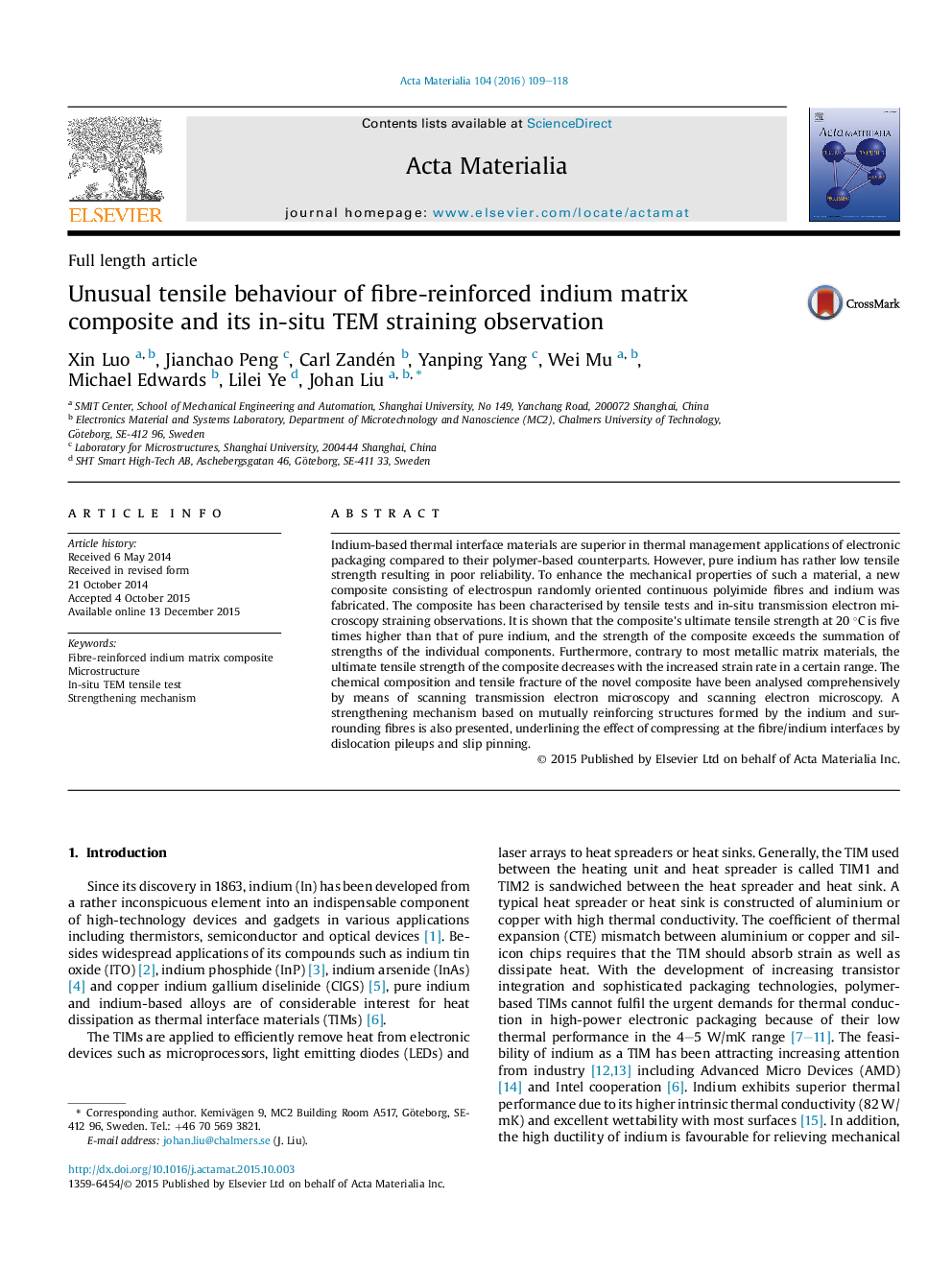| Article ID | Journal | Published Year | Pages | File Type |
|---|---|---|---|---|
| 1445151 | Acta Materialia | 2016 | 10 Pages |
Indium-based thermal interface materials are superior in thermal management applications of electronic packaging compared to their polymer-based counterparts. However, pure indium has rather low tensile strength resulting in poor reliability. To enhance the mechanical properties of such a material, a new composite consisting of electrospun randomly oriented continuous polyimide fibres and indium was fabricated. The composite has been characterised by tensile tests and in-situ transmission electron microscopy straining observations. It is shown that the composite's ultimate tensile strength at 20 °C is five times higher than that of pure indium, and the strength of the composite exceeds the summation of strengths of the individual components. Furthermore, contrary to most metallic matrix materials, the ultimate tensile strength of the composite decreases with the increased strain rate in a certain range. The chemical composition and tensile fracture of the novel composite have been analysed comprehensively by means of scanning transmission electron microscopy and scanning electron microscopy. A strengthening mechanism based on mutually reinforcing structures formed by the indium and surrounding fibres is also presented, underlining the effect of compressing at the fibre/indium interfaces by dislocation pileups and slip pinning.
Graphical abstractFigure optionsDownload full-size imageDownload high-quality image (238 K)Download as PowerPoint slide
